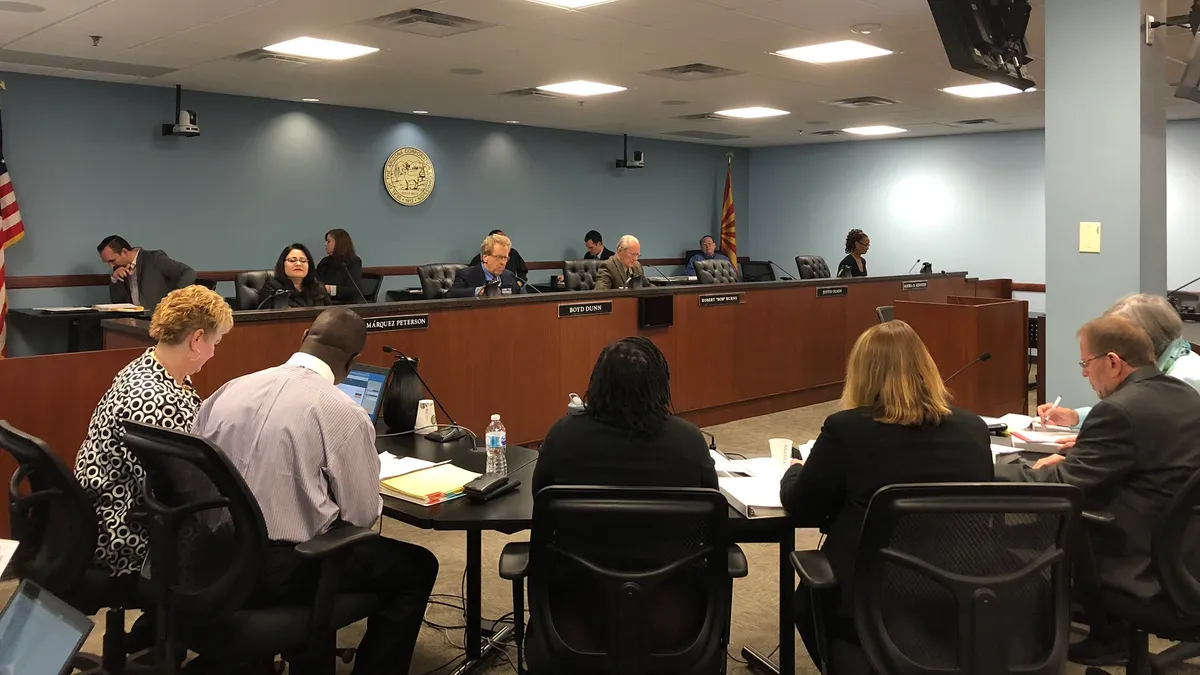Dive Brief:
- Arizona Corporation Commission Chairman Robert Burns has outlined a new integrated resource plan (IRP) process he says will "provide more independence and greater stakeholder input."
- The 15-step proposal includes development of an All-Source Request for Proposals (RFP) to meet a commission-approved load forecast. The all-source RFP would be "technology neutral, location neutral and size neutral," and would require review by the ACC.
- Currently, Arizona regulators do not approve utility load forecasts and long-term plans, but instead "acknowledge" them. Regulators are "completely dependent on [utility] numbers," Burns told Utility Dive.
Dive Insight:
The Arizona IRP process relies too heavily on the utility's own analysis, according to Burns, and ultimately doesn't allow regulators to exercise the oversight they would like.
"We don't actually approve anything, we just acknowledge," Burns said. But under his proposal, the commission would need to approve a utility's demand forecast which would then form the basis for issuing an all-source RFP.
Burns' proposal is aimed at least in part at Arizona Public Service: last year the ACC declined to acknowledge the utility's IRP, pushing back on a growing reliance on gas-fired power.
An all-source RFP would allow participation from demand side management resources, customer-owed solar and other non-traditional resources, said Burns. The results of the RFP would be reviewed by commission staff and an order would be issued.
"That's a huge difference from what we do now," said Burns. "My problem with the IRP process, from the first time I heard how it worked, is that there wasn't an independent evaluation of need."
Burns said the idea for the new IRP process was developed with his policy advisor, Steve Olea, following meetings of a joint task force of the National Association of Regulatory Utility Commissioners and National Association of State Energy Offices, focused on comprehensive electricity planning.
"I have always believed that the commission's [IRP] process should be as independent as possible," Burns wrote in his letter proposing changes. That process should involve an evaluation by an independent party and not just the utility, he wrote, "and should involve as much stakeholder participation throughout as reasonably possible."
Burns published his proposal Oct. 15, but there is no deadline for comment included and the timeline for developing the new process remains uncertain. He said the commission would probably allow two to three weeks, to see what sort of responses come in.
Next steps could include scheduling a discussion among regulators, a public meeting to hear comments and opening a docket for the proposal.
"I'm ready to move forward," said Burns.














